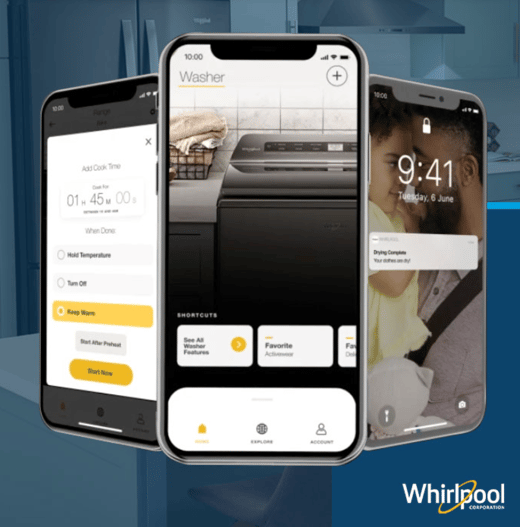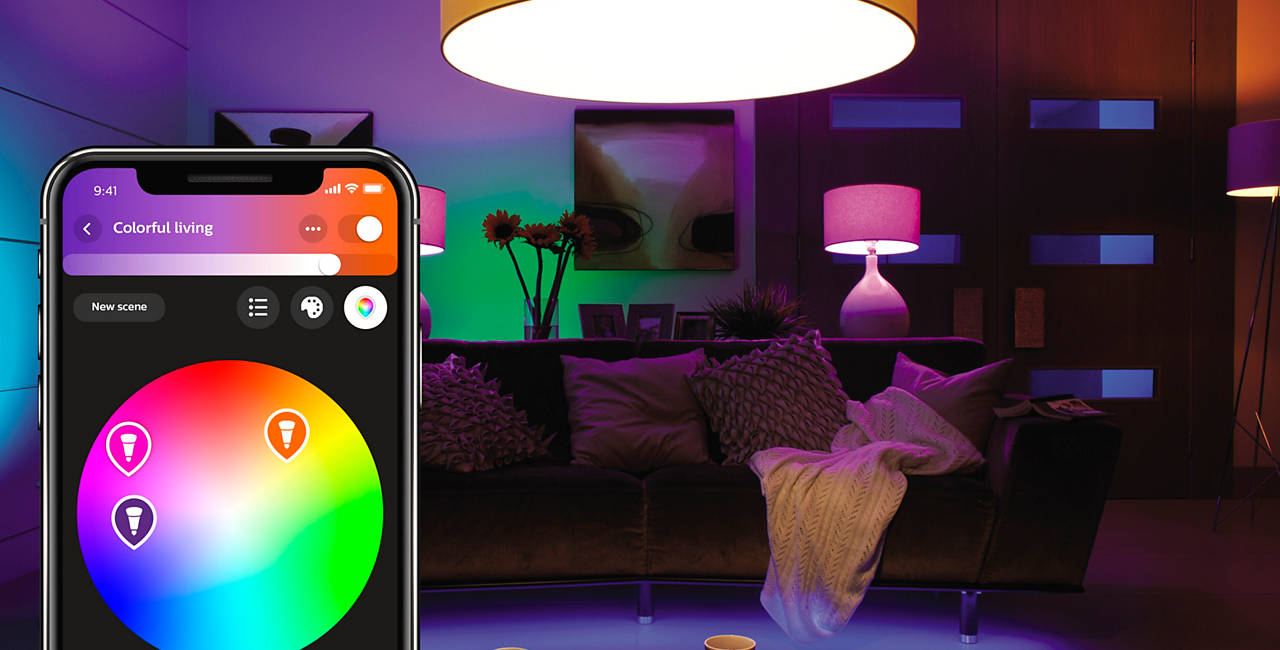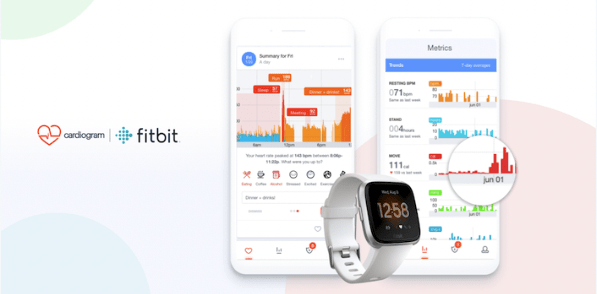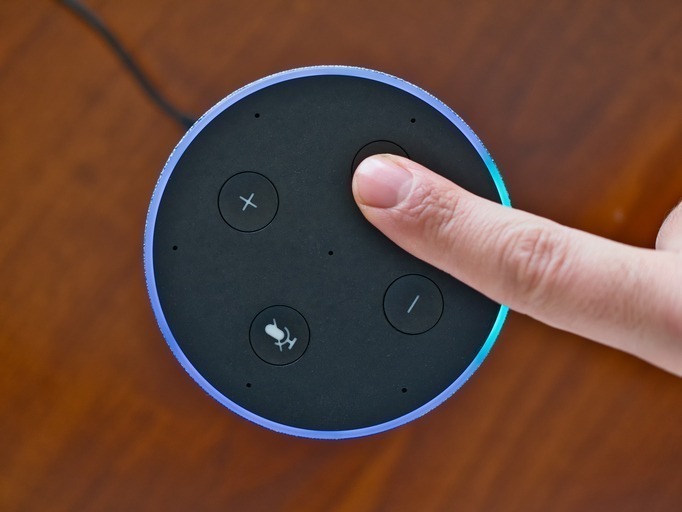Can you imagine waking up to the aroma of freshly brewed coffee without lifting a finger? Or receiving a reminder from your fridge to grab milk on your way home?
The Internet of Things (IoT) era has brought everyday objects to life in a connected world that transforms how we live our daily lives. And the best part? These systems keep getting smarter. This cutting-edge technology has already revolutionized how we interact with brands.
The battleground of modern marketing is customer engagement. In a world full of options, winning over customers requires creating personalized experiences that resonate. Enter IoT, a game-changer for customer engagement, offering a new playbook for brands to create deeper, more meaningful connections with their audience.
Take, for instance, Sarah, a fitness aficionado, with a new smartwatch that tracks her health metrics, offering personalized insights and encouragement. This smartwatch is a bridge between Sarah and the brand, enabling proactive, personalized, and timely engagement. Through the lens of IoT, the brand isn’t just selling a product; it’s entering into a dynamic relationship with Sarah, responsive to her needs, habits, and preferences.
This is the essence of how IoT is reshaping customer engagement. It’s not about the novelty of smart devices; it’s about leveraging these connections to build personal and genuine relationships. Brands that understand and embrace this shift are not just staying ahead of the curve—they’re redefining it, transforming every interaction into an opportunity to impress, engage, and inspire.
Market research is pivotal in the IoT revolution by providing insights into consumer expectations and technology adoption patterns. Through comprehensive analyses, brands can gauge the effectiveness of IoT implementations in enhancing customer experiences. For example, research helps identify which IoT features are most valued by customers in smart home devices, allowing companies to prioritize these aspects in product development. This data-driven approach ensures IoT solutions are closely aligned with consumer needs, maximizing their impact on the market.
Understanding the Internet of Things (IoT) and Its Impact on Markets
Key Components of IoT
The Internet of Things (IoT) refers to the network of physical objects (things) embedded with sensors, software, and other technologies to connect and exchange data with other devices and systems over the Internet. These devices range from ordinary household items to sophisticated industrial tools. The critical components of IoT include:
- Sensors/Devices: These collect data from the environment, from a temperature sensor to a smartwatch monitoring your heart rate.
- Connectivity: Devices must be connected to a cloud network through various methods, such as Wi-Fi, Bluetooth, or cellular networks, to send and receive data.
- Data Processing: Once the data is collected and sent to the cloud, software processes it to make it useful. This could be as simple as checking if the temperature is within an acceptable range or as complex as using machine learning to predict equipment failure.
- User Interface: The processed data needs to be made helpful to the end-user, which can happen through notifications, dashboards, or other forms of alerts.
Historical Evolution of IoT and Its Growing Relevance in Various Industries
The concept of IoT has been around since the 1980s, with the first internet-connected toaster being presented at a conference in 1989. However, the term “Internet of Things” was coined by Kevin Ashton in 1999. Since then, IoT has evolved significantly thanks to advancements in sensor technology, internet connectivity, and big data analytics.
IoT’s relevance across industries has been monumental. In manufacturing, IoT is used for predictive maintenance and supply chain optimization. The healthcare sector leverages IoT for remote monitoring and patient care. Smart homes utilize it for energy management and security, while retail benefits from IoT in inventory management and customer experience enhancement. Each industry’s adoption highlights IoT’s versatility and transformative potential.
Market research shows how IoT solutions meet specific customer demands in sectors like healthcare, where patients seek more personalized and proactive care, or in retail, where shoppers desire more engaging and customized experiences. These insights help brands across sectors tailor their IoT strategies to address the unique needs of their target audiences, fostering deeper customer engagement.
The Adoption of IoT and Its Projected Growth
The adoption of IoT technologies has seen rapid growth, and this trend is expected to continue.
The global Internet of Things (IoT) market size is projected to grow from $714.48 billion in 2024 to $4062.34 billion by 2032, at a CAGR of 24.3%.
The economic impact is equally significant. A report by McKinsey & Company suggests that IoT could generate up to $11.1 trillion a year in economic value by 2025 across multiple industries, including manufacturing, healthcare, and retail. This potential for value creation shows the strategic importance of IoT investments for brands looking to innovate and compete.
Traditional vs. IoT-driven Customer Engagement Strategies
In the past, customer engagement was all about broad marketing campaigns, surveying for feedback, and reacting to customer-initiated interactions. While these methods were effective back then, today’s digital consumers expect more personalization and immediate responses that cater to their unique needs.
IoT-driven strategies, in contrast, use data from connected devices and allow brands to engage with consumers in a more proactive and personalized manner.
This approach allows for dynamic interaction based on real-time or predictive analysis of consumer behavior, preferences, and needs. Unlike traditional methods that may categorize consumers into broad segments, IoT opens up doors to engage with customers on an individual level, providing customized solutions that satisfy their unique needs.
The Role of Real-Time Data in Understanding Consumer Behavior
With the rise of IoT devices, brands can gain instant insights into consumer behavior, preferences, and even predictive trends. This data allows them to customize their products, services, and communication to meet their customers’ immediate needs or future desires, sometimes even before the customers themselves are aware of them!
For instance, think of a fitness tracker that not only helps you track your physical activity but also provides the manufacturer with data on how you use it. This data allows the manufacturer to improve its product features, offer personalized health and fitness advice, and create targeted marketing campaigns that resonate with you. All of this helps to enhance your user experience, making you feel more connected to the brand and its values.
Case Studies: Before and After IoT Integration in Customer Engagement
Case Study 1: Nike and its Nike+ Ecosystem
Before IoT Integration: Nike’s customer engagement was primarily transactional, with interactions happening during purchases or through conventional advertising and social media campaigns.

Photo Credit: Nike – Nike Training Club – A Nike App
After IoT Integration: The introduction of the Nike+ ecosystem, which includes a range of smart athletic footwear connected to the Nike+ app, transformed customer engagement. The app collects data on the user’s physical activity, offering personalized coaching, performance tracking, and social features to encourage users to share their achievements. This IoT-driven approach has not only deepened customer engagement by making it more personal and continuous but has also provided Nike with valuable insights into product usage and customer preferences, driving further innovation.
Case Study 2: Whirlpool Smart Appliances
Before IoT Integration: Whirlpool engaged with customers through traditional channels such as sales support, customer service calls, and feedback forms. The relationship with the product typically ends at the point of sale, except for service or repair events.

Photo Credit: Whirlpool Corp
After IoT Integration: With the introduction of smart appliances, Whirlpool shifted toward a more engaged and ongoing relationship with its customers. These IoT-enabled products allow Whirlpool to offer remote diagnostics, usage-based tips for efficiency, and proactive service alerts. For consumers, this means a more personalized and hassle-free experience, while Whirlpool gains direct insights into how its products are used, informing future design and service offerings.
IoT-Enabled Products and Services Enhancing Customer Experiences
Overview of IoT-enabled Products and How They Interact with Consumers
IoT-enabled products are embedded with technology that allows them to collect data, connect to the Internet, and interact with consumers and other devices. These products enhance customer experiences by offering personalization, convenience, and efficiency. Through sensors, smart devices gather data on user behavior and environmental conditions. This data is then processed and used to adapt the device’s real-time performance to the user’s needs. For instance, a smart thermostat learns the household’s temperature preferences and adjusts automatically for comfort and energy efficiency.
Examples of Sectors Revolutionised by IoT
- Smart Homes: IoT technology in smart homes includes smart thermostats, security cameras, and lighting systems. These devices offer homeowners convenience, energy efficiency, and security by allowing them to control their home environments remotely and receive alerts about potential security breaches.
- Wearables: Wearable devices such as fitness trackers and smartwatches monitor health and fitness metrics, providing users with insights into their physical well-being and personalized health advice based on the data collected.
- Smart Cities: IoT applications in smart cities encompass traffic management systems, waste management, and environmental monitoring. These systems improve urban living by reducing congestion, managing resources more efficiently, and improving public safety.
- Healthcare: In the healthcare sector, IoT devices like remote monitoring equipment and wearable health monitors allow for continuous patient monitoring, early detection of potential health issues, and more personalized care.
- Retail: Retailers use IoT for inventory management, enhancing customer experience, and personalized marketing. Smart shelves, for instance, can detect when stock is low and automatically reorder products, while beacons can send customized offers to customers’ smartphones when they are near a particular product.
- Automotive: The automotive industry utilizes IoT for connected vehicles that improve safety and convenience through features like predictive maintenance, real-time navigation updates, and autonomous driving capabilities.
Successful IoT-enabled Services and their Impact on Customer Engagement
Philips Hue Lighting
Philips Hue’s smart lighting system allows users to control their lights remotely via a mobile app, set lighting schedules, and customize color settings to create the desired ambiance. By integrating with voice assistants like Amazon Alexa and Google Assistant, Hue enhances user convenience further. The system’s ability to adapt to users’ preferences and routines, such as gradually increasing light intensity to mimic sunrise, has significantly improved customer engagement by making the product an integral part of their daily lives.

Image credit: Smart home sounds
Fitbit Wearables
Fitbit’s range of wearable devices tracks various health metrics, including steps taken, heart rate, and sleep patterns. Through the Fitbit app, users receive personalized insights and recommendations based on their activity data, fostering a more engaged relationship with their health and wellness. Fitbit also leverages social features, allowing users to participate in challenges with friends or family, which enhances user engagement and encourages continuous use of the product.

Image Credit: MobiHealth News
Personalization Through IoT: A New Era of Marketing
The Importance of Personalisation in Modern Marketing Strategies
- Key Differentiator: Sets brands apart in capturing and retaining consumer attention.
- Consumer Expectations: Demand for relevant, timely, and tailored brand interactions.
- Benefits: Enhances customer engagement, satisfaction, loyalty, and, ultimately, sales.
- Outcome: Brands that excel in personalization deliver more value, distinguishing themselves in the competitive market.
How IoT Facilitates Unprecedented Levels of Personalisation
- Real-Time Data Collection and Analysis: Utilises IoT technology for in-depth consumer behavior, preferences, and needs understanding.
- Examples:
- Smart Refrigerator: Suggests recipes and shopping lists based on consumption patterns and dietary preferences.
- Wearable Fitness Tracker: Offers personalized health and fitness advice by analyzing activity, sleep patterns, and physiological data.
- Impact: Enables a level of personalization previously unimaginable, enhancing consumer experiences significantly.
Analysis of Data-Driven Marketing Campaigns Enabled by IoT
- Targeted Personalisation: Leverages insights from connected devices for highly personalized marketing messages.
- Examples:
- Smart Thermostat Manufacturer: Segments customers by climate preferences to offer energy-saving tips or product promotions.
- Retailers with Beacons: Sends personalized offers to customers’ smartphones based on in-store proximity and online interest.
- Effectiveness: Improves customer engagement and the efficiency of marketing efforts by ensuring messages are timely and relevant.
Future Trends in IoT Development and Their Potential Effects on Customer Interaction
Several future trends in IoT development are poised to transform customer interaction further:
- AI and Machine Learning Integration: Incorporating AI and machine learning with IoT will enable more sophisticated data analysis, predictive maintenance, and personalized customer experiences.
- 5G Technology: The rollout of 5G networks will significantly improve the connectivity, speed, and reliability of IoT devices, enabling real-time data processing and enhanced mobile experiences.
- Edge Computing: Moving data processing to the edge (closer to where data is generated) will reduce latency and improve the responsiveness of IoT applications, leading to smoother customer interactions.
- Voice and Conversational Interfaces: Integrating voice assistants and conversational AI with IoT devices will make customer interactions more natural and intuitive.
- Increased Regulation and Standardisation: As IoT continues to grow, we can expect more regulations to ensure data privacy and security, as well as standards for interoperability among devices, enhancing trust and ease of use for consumers.
Predictions on How IoT Technologies Will Continue to Evolve and Influence Customer Engagement Strategies
As IoT technologies advance, we expect them to be more pivotal in shaping customer engagement strategies. Future IoT devices will likely be more intuitive, capable of even greater personalization, and seamlessly integrated into our daily lives. Predictive analytics, powered by IoT, will enable brands to anticipate customer needs and preferences with remarkable accuracy, allowing for proactive engagement strategies that cater to individual consumer desires before they even express them. As IoT devices become more interconnected, the potential for creating comprehensive customer experiences that bridge the physical and digital worlds will become a reality, offering new avenues for engagement.
Potential for Emerging Technologies (AI, Machine Learning, Blockchain) to Integrate with IoT for Even Deeper Customer Insights
Integrating AI and machine learning with IoT promises to revolutionize customer engagement by enabling smarter, adaptive systems that learn from user interactions to offer increasingly personalized experiences. AI can analyze the vast amounts of data IoT devices generate to identify patterns and preferences, making customer engagement efforts more targeted and effective. Machine learning algorithms can predict future behavior, allowing brands to tailor their marketing efforts and product offerings more precisely.
Blockchain technology, when combined with IoT, offers a secure and transparent way to store and manage the data generated by IoT devices. This could enhance trust in IoT systems by giving users more control over their data and its use, fostering a deeper sense of loyalty and engagement with brands prioritizing data security and privacy.
The Role of IoT in Shaping Future Customer Expectations and Brand Loyalty
As IoT becomes more ingrained in consumers’ lives, expectations for personalized, convenient, and seamless experiences will rise. Customers will increasingly expect brands to understand their needs and preferences and engage with them more personally and meaningfully. This heightened expectation will push brands to innovate continuously, using IoT to deliver exceptional experiences that meet and exceed these evolving demands.
The role of IoT in building brand loyalty will also become increasingly significant. Brands that effectively use IoT to engage customers, providing value beyond the basic functionality of their products or services, will foster stronger emotional connections. These connections can turn satisfied customers into brand advocates, driving loyalty and long-term engagement in an increasingly competitive marketplace.
Challenges and Ethical Considerations in IoT-Driven Customer Engagement
As more companies adopt Internet of Things (IoT) devices to improve customer engagement, several challenges and ethical considerations must be considered.
- Personalization in customer engagement through IoT must balance tailored experiences and consumer privacy.
- Transparency about data collection, use, and sharing practices is crucial to maintaining consumer trust.
- Providing consumers with control over their data, such as options to opt out of data collection or delete their data, helps maintain trust and assures consumers that their privacy is valued.
- IoT devices introduce significant security vulnerabilities and must be secured through encryption, software updates, and secure authentication mechanisms.
- Brands must adopt a security-first approach to IoT deployment to maintain consumer trust and brand reputation.
- Existing data protection laws, such as GDPR and CCPA, provide guidance on handling personal data collected through IoT devices.
- Ethical considerations must guide the use of IoT in customer engagement, including ethical data use and long-term implications on consumer behavior and societal norms.
As we stand on the brink of a new era in customer engagement, the transformative potential of the Internet of Things (IoT) is undeniable. Through the lens of IoT, we are witnessing a revolution—a seismic shift in how brands connect with, understand, and deliver value to their customers. This is a journey from the impersonal to the intimate, from the generic to the genuinely personalized.
With the limitless potential for personalization, brands can now become an integral part of their customers’ daily lives rather than just being one option among many.
Integrating market research throughout the IoT development and implementation process ensures customer engagement strategies are informed by real-time data and deeply aligned with evolving consumer expectations. This symbiotic relationship between IoT and market research paves the way for a future where technology and customer insights converge to create truly personalized and engaging consumer experiences.




